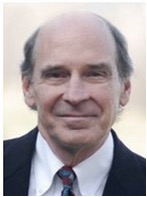A recent kerfuffle ensued when a CDC analyst leaked details of a meeting that noted a list of banned words and phrases that included ‘evidence-based’ and ‘science-based’. This most recent assault on reason from the Trump administration was lapped up by partisans as yet another example of the dangers of having reality stars occupy the White House.
Unfortunately no one apparently told the director of the CDC, who took to twitter to respond:
I want to assure you there are no banned words at CDC. We will continue to talk about all our important public health programs.
— CDC Director (@CDCDirector) December 17, 2017
Details are sparse. A meeting took place. Words were discussed. No Trump administration official has come forward to take ownership of the meeting.
Regardless, we should all be relieved that we can now get back to the business of implementing evidence based health care policy.
How has that been going anyway?
Ten years ago this month Atul Gawande wrote a widely read article in the New Yorker called The Checklist. In it he related a masterful riveting story of a 3 year old girl in Austria who slipped into an icy pond, and was underwater for 30 minutes. On arrival to the intensive care unit, she required massive support – a heart lung machine, treatment and monitoring of brain swelling. The end result in this case was nothing short of miraculous. Two years later, she was like any other than 5 year old. The point Gawande goes on to make is that the complexity of patients in the critical care setting is overwhelming. In these sickest of sick patients even one mistake could be the difference between life and death. Humans can’t do it – and the error rate that inevitably results is not one that society should bear.

 What matters is what we know, not what we think
What matters is what we know, not what we think
 Policymakers and providers all agree that addressing patients’ non-medical needs will be critical to improving health, health care, and health care costs, but little progress has been made towards integrating traditionally segmented services. What can and should a health care organization do? Realistically, most health care organizations will not build new lines of social services into their core clinical operations. Instead, leading organizations are connecting the dots by optimizing referrals to existing community resources. Based on phone interviews and site visits with executive leadership, frontline providers, and community partners, we highlight the work of nine innovative health care organizations. Here, we offer practical steps to reflect upon where your organization stands and where it might look to be in a referral model for community resources.
Policymakers and providers all agree that addressing patients’ non-medical needs will be critical to improving health, health care, and health care costs, but little progress has been made towards integrating traditionally segmented services. What can and should a health care organization do? Realistically, most health care organizations will not build new lines of social services into their core clinical operations. Instead, leading organizations are connecting the dots by optimizing referrals to existing community resources. Based on phone interviews and site visits with executive leadership, frontline providers, and community partners, we highlight the work of nine innovative health care organizations. Here, we offer practical steps to reflect upon where your organization stands and where it might look to be in a referral model for community resources.
 “We’re going to have to get back next year at entitlement reform, which is how you tackle the debt and the deficit. Frankly it’s the health-care entitlements that are the big drivers of our debt…that’s really where the problem lies, fiscally speaking.”
“We’re going to have to get back next year at entitlement reform, which is how you tackle the debt and the deficit. Frankly it’s the health-care entitlements that are the big drivers of our debt…that’s really where the problem lies, fiscally speaking.” 







